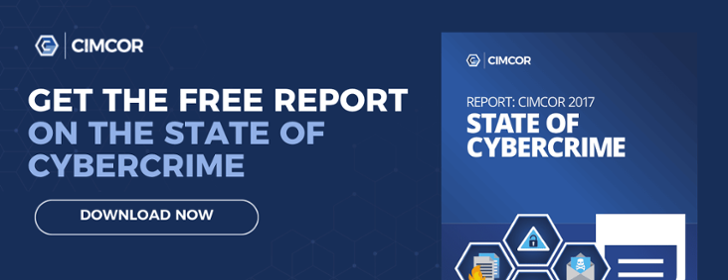The network security landscape is always changing.
New threats are constantly appearing on the horizon. Cybercriminals are becoming more effective at breaching organizational security measures and successfully stealing protected information.
In many cases, malware attacks have the goal of surreptitiously exporting customer data to an external host. With advanced persistent threats (APT) and other forms of attack, criminals can maintain system access for long periods, spying on your business and stealing massive amounts of information. Too often, these breaches can go undetected indefinitely due to a lack of technical tools for network oversight.
These attacks hit companies of all sizes.
Preparing for Cyber Threats in 2017
Though crime targeting smaller businesses may not be as newsworthy as that against retail giants like Home Depot and Michaels, the risks can be greater since their cybersecurity relies on a more restricted budget and a smaller team.
Staying ahead of the game is important, but remaining caught up with current top-level cybersecurity and making it a priority is essential. To do this, you need to understand the present threats and how you can defend against them.
Analysts are predicting more advanced and sophisticated security threats in 2017. Between increasingly sophisticated malware technology and growing technical sophistication among cybercriminals, cyber defense needs to be at the forefront of your security plan.
Attacks IT should prepare for include application and web application-specific malware and DDoS. Though these attacks are not new, the intensity and specifics of these attacks are dynamically changing. These best practices, if followed, can ensure you're not caught off guard when you find yourself in the cross-hairs of a cyber attack.
1. Meticulously Maintain Software
Malware is evolving.
Today's malicious code often has the sophisticated ability to execute programmed tasks while avoiding detection. One important way to combat malware is by keeping your antivirus software up to date.
With most commercial software, patches are developed and released as vulnerabilities are discovered. These should be installed immediately. For the most part, these patches are developed in response to exploits or the potential for a breach or attack. By patching the software, you’re protecting yourself from having the same vulnerability exploited.
Encourage your IT Security personnel to conduct audits of your antivirus software. No antivirus is foolproof, and virtually all solutions have inherent vulnerabilities, even if patching is kept up to date. They should be seeking improvements constantly to stay prepared and ahead of the game.
2. Monitor Your Permissions
Insider threats have always been an issue, but when an employee becomes disgruntled, the risk grows. This makes it essential to cut employee access upon termination. Before leaving the office, privileges should be revoked and all user accounts deactivated. This mitigates some risks of data theft or damage.
Most businesses have privileged parties such as security administrators or leadership team members with elevated access credentials. "Superuser" or near-superuser privileges can be an operational necessity. Even if an individual is considered highly trustworthy, providing anyone with total access to data and systems carries risks. Your organization needs security logs that can't be modified—even by individuals with high-level access.
Create a screening practice for new employees to ensure they’re not a security threat. Once the pre-hire screening is passed, make security a core component of your employee onboarding and training processes. Individuals assigned with training new hires in any area of your organization should observe and guide security-focused behaviors.
Lastly, apply additional firewalls and prevent personal devices from being logged in to your network. Viruses can travel on any device that holds data, and something as simple as a thumb drive an employee “took home to keep working” can become a major threat.
3. Establish a Security Policy
Employee behavior at every level of the organization should be guided by a security policy. This is your method of setting clear parameters for external drives, password protection, and account usage.
Since security policies generally get glanced over by employees, try to increase comprehension and awareness through security updates and regular training.
On a weekly basis, consider highlighting portions of your policy and relating them to real-world issues. Offering advice and the proper manner of handling the situation ensures your employees understand what to do and what’s at stake.
In 2015, Rogers Communications faced a social engineering breach from someone impersonating IT to gain login information. Had the employee who shared information been aware of these attacks or a policy been laid out, the situation could have been avoided.
In-person training, preferably behavioral-based testing, might help to be a core component of your policy. To affect real change in how people behave, they need real-world exercises on how to act when it comes to technology.
4. Monitor Third-Parties
Third-party applications and access can be essential to your operation, but every additional point of access increases your risk exposure.
Your third-party contractors should always have the minimum access necessary. Data breaches aren't always obvious, and your third party's access to your data can represent a major point of entry to your network.
Screen any companies you work with or through to ensure they have a culture of security, and if applicable, that they are in full compliance with regulatory requirements. View their security policies to validate whether they’re actively working to ensure threats are stopped.
5. Deploy a Total FIM Solution
Accidental and malicious attacks on your files can be dangerous and hard to track. With CimTrak, they’re identified immediately.
It’s a cost-effective solution for your file integrity monitoring that offers unique ease of use. The software takes minutes from installation to running, providing you with incredible compliance and security fast.
CimTrak monitors a wide range of areas, granting the details behind any changes that need your attention. All of your files and configurations are stored securely and are fully encrypted. CimTrak also differentiates file changes between good and bad, alerting you to actual problems and providing you with integrity monitoring, incident response, and auditing capabilities.
Staying Ahead of Threats
While 2017 will bring new cyber threats, staying ahead of security best practices and maintaining regulatory compliance will assist in keeping your business safe.
Put these best practices for network security to use and conduct an audit of your vulnerabilities. With tools like CimTrak, you’re able to monitor all your files and catch threats as they occur, not when it’s too late.
Tags:
Cybersecurity
February 7, 2017




